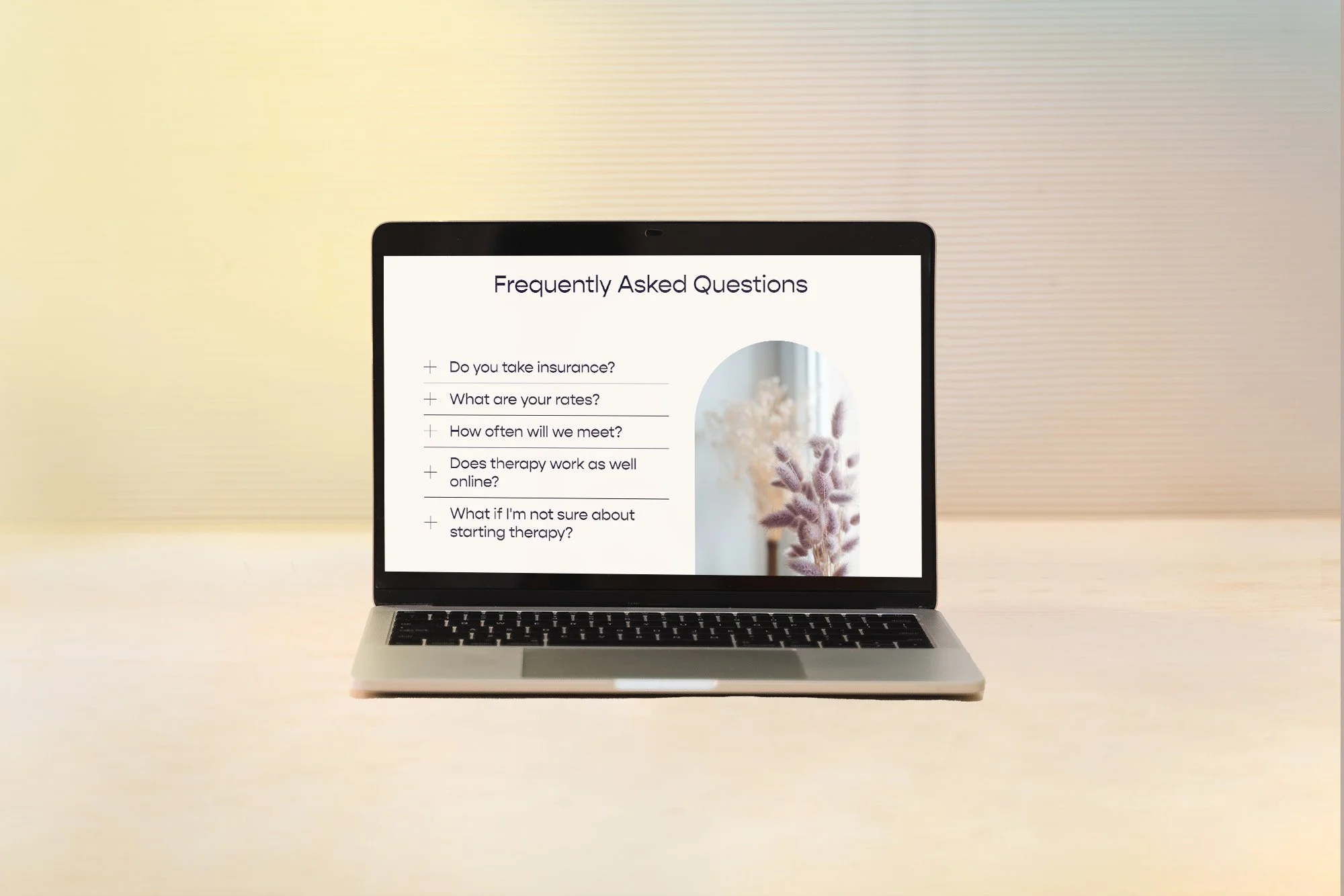How to Write Therapy Website Content to Attract Your Ideal Client
You know that a website is important in building a private practice. But…what exactly are you supposed to write in it?
If you want to attract your ideal clients to your private practice, you’ve got to write in a way that speaks to them, and today’s post is all about how to do just that!
First Things First: What Not To Do
Here’s an example of copy that is not very effective, that you might see on a therapist’s website:
About Me
I earned my Master's Degree at Anytown University and graduated with honors. I trained at Anytown Hospital in the Outpatient Anxiety Program where I was awarded Best Anxiety Therapist of the Year. I am certified in Exposure and Response Prevention and provide training in EMDR, ERP, EFT, CBT, and ABCDEFG. I'm on the Board of WXYZ. I treat Anxiety, PTSD, Major Depressive Disorder, and Adjustment Disorders.
So what makes this therapist’s writing not so effective?
Using too many “I statements.” As therapists, we love “I statements” when it comes to talking about feelings in a session. But they are not so great when you’re trying to reach a client through your website! Your client is in pain and wants to know that you understand the pain and can help them with it.
Listings of accolades and acronyms are not of primary interest to potential clients. Some clients might care where you went to school or whether you’ve won awards, but most do not (see above).
Many would-be clients are therapy-savvy and do search for specific treatment types or licensure these days, so it can be worth listing them somewhere, but I’d do it sparingly, and not on your home page.
“The confused mind says no”. Don’t give your clients a chance to be confused or they will likely bounce from your site.
Using too much clinical jargon and diagnostic language. nstead, use the words that your would-be client might use to describe the reason they are looking for treatment. Some clients might be searching for treatment for a specific diagnosis. But most people, just want to know that they can come to you in a difficult moment of their lives and that you can provide some support and guidance. Using words that they might use to describe the problem they are having conveys an understanding, while a using DSM diagnosis does not.
Nothing turns people off like typos! We are human, it happens, but do your best to avoid them. If you need help with proofreading, I’m a huge fan of Grammarly.
Now, here’s that same therapist’s website, but with writing that is more client-centered:
Hi, I’m Joe
Does worrying keep you up at night? Or maybe it gets in the way of you getting work done or connecting with your partner? Do you find yourself avoiding things because you feel anxious?
You are not alone. I have helped many clients over the years overcome these concerns and getback to living the balanced and connected life they were meant to live.
Get in touch today for your free 15-minute consultation.
What makes this writing more effective?
It speaks to the client’s experience in a nuanced way that is about behaviors and internal experiences, not about clinical terms.
It conveys a sense of competence without listing accomplishments.
It’s not too wordy.
It speaks to the outcome (e.g. “getting back a sense of connection and vitality”).
There’s a “call to action” and a clear offer (e.g. a free 15-minute phone consult).
Is this example perfect and does it encapsulate what is right for every therapist and everything you should have on your page?
Nope, of course not.
But hopefully, it does illustrate, in broad strokes, the tone you want to aim for and some pitfalls to try to avoid.
“OK, so how do I get started?”
Know Your Ideal Client
If you aren’t clear on who you are writing to, you aren’t going to be able to write effective copy. You need a defined audience, otherwise your message will be muddy.
Don’t know who your ideal client is? We’ve got you. Grab our “Know Your Niche Worksheet” and get started!
“Great, what’s next?”
Take a look at what you’ve written. Are there any themes that are sticking out? Start to pull those themes out.
As much as possible, use your client’s actual words (obviously while maintaining confidentiality) as a template for your copy.
When you are writing copy you are not going to “nail it” right away. So just get thoughts down.
Then start to form a rough draft, and then refine, edit, refine.
Then have some other people read it.
Then refine and edit.
Then sleep on it.
Then look at it again.
Then publish.
It’s a process. Don’t worry about having it perfect right away. And, know your website is a living document, you can always continue to add and edit.
Final Thoughts
To write great copy, you have to know your audience and be clear on your goals first. At the same time, your website should be an evolving entity. It can evolve as your work evolves. And it certainly doesn’t need to be perfect. Don’t let perfection get in the way of good enough!
Check out our Therapist Website Templates
Each template comes with step-by-step instructions for each page and help defining your niche and your messaging, as well as tons of SEO support!















